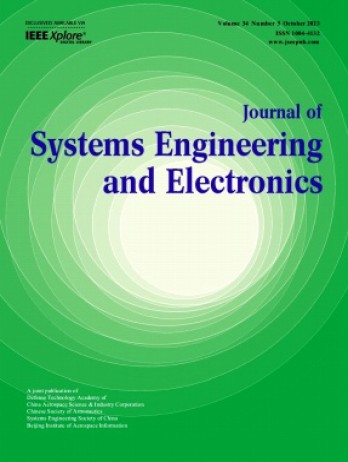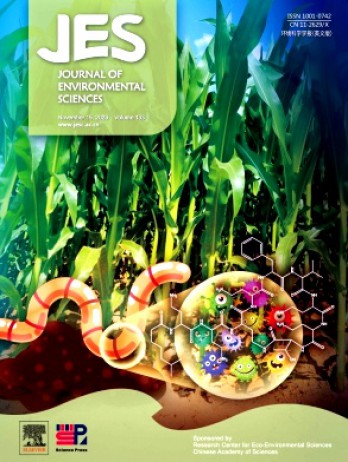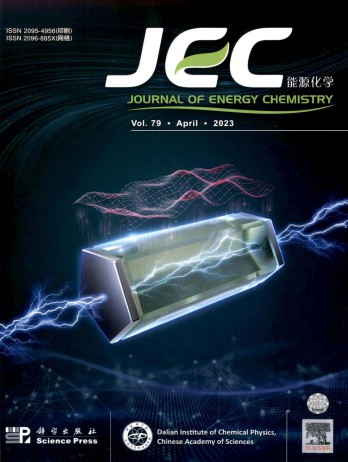想在《Journal of Systems Engineering and Electronics》雜志實現快速發表,需要遵循一定的策略和步驟。
以下是一些建議,具體策略如下:
1.?選擇合適的期刊
了解期刊要求:《Journal of Systems Engineering and Electronics》雜志要求投稿內容與科學領域相關,確保論文主題符合雜志的定位,主要欄目有系統工程、電子技術、軍用系統分析、防御電子技術、控制理論與實踐、軟件、算法與仿真、計算機開發與應用等。
關注審稿周期:《Journal of Systems Engineering and Electronics》雜志的審稿周期預計:預計1-3個月。
2.?提高論文質量
內容質量:確保論文內容新穎、觀點明確、數據可靠,避免與已有文獻重復。
嚴格按照《Journal of Systems Engineering and Electronics》雜志投稿要求準備稿件:
Aims and scope
The journal, keeping abreast with the development trend of science and technology worldwide, reports the latest developments and achievements in systems engineering and electronics and related research areas, and encourages various academic views. The journal welcomes papers from a wide variety of countries.
The journal strives to publish high-quality papers reporting original work in both theoretical and practical research results within the journal scope, involving system analysis, system modeling and simulation, military system analysis, aircraft control, C3I, radar, information systems engineering, machine intelligence, artificial neural networks, information acquisition and processing, aerospace electronics, and other topics in all related fields.
Title
The title is centered on the page and should be short and concise. Please limit the title to a maximum length of 10 words. The author’s name follows and is also centered on the page. The author’s last name should be preceded by the other names spelled out in full. The author’s affiliation and address are also needed.
The corresponding author should be clearly indicated with the asterisk (i.e., *) and given on the bottom of the first page. Please provide the financial support acknowledgments (name and number) on the bottom of the first page.
Abstract
An abstract, not exceeding 200 words, is required for all papers. Acronyms and abbreviations are spelled out at first mention in the abstract. It should be a summary of the paper and not an introduction. Because the abstract may be used in abstracting journals, it should present concisely the purposes, methodology used, results obtained, and conclusions.
Keywords
The author must provide a list of keywords, up to a maximum of six. No acronyms and abbreviations should be used.
Text
Text should be typed in double-column. The introduction of paper should explain the nature of the problem, previous work, purpose, and contribution of the paper. It is assigned the number “1” and following sections are assigned number as needed. For example, the third section of a paper might be “3. Simulation results” headings. Acronyms and abbreviations are spelled out at first mention in the text, even they have already been defined in the abstract.
Figures and tables
The authors must ensure figures of sufficient quality and resolution. Figure captions appear below the figures. Figures should be numbered in the order they appear in the text. Table titles appear above the tables. Please verify that the figures and tables you mention in the text actually exist. When referring to a figure or a table in the text, use the abbreviation “Fig.” even at the beginning of a sentence, and do not abbreviate “Table”.
Equations
Number equations consecutively with equation numbers in parentheses flush with the right margin, as in (1). Be sure that the symbols in the equation have been defined before the equation appears or immediately following. When referring to “(1)”, do not use “Eq. (1)” or “equation (1),” except at the beginning of a sentence: “Equation (1) is ...”.
Conclusion
A conclusion must be included and should indicate clearly the advantages, limitations, and possible applications of the paper.
Acknowledgment
Individuals or units other than authors who were of direct help in the work should be acknowledged by a brief statement following the conclusion. This heading is not assigned a number.
References
Only articles that have been published may be included in the references. Each reference is referred to in the text by a number enclosed in a square bracket (i.e., [3]). References must be numbered and ordered according to where they are first mentioned in the paper. A reference list must be included using the following information as a guide.
Biographies
Short biographies (120-150 words) should be provided that detail the authors’ education, work histories and research interests as well as their E-mail. The authors’ full names are needed. Small (2.5 cm×3.5 cm), black-and-white and high- resolution (300 dpi) photos of each author should be included.
3.?優化投稿流程
網絡投稿:通過《Journal of Systems Engineering and Electronics》雜志的官方網站進行投稿,確保所有信息填寫準確。
快速通道:部分期刊提供快速通道服務,可以縮短審稿和發表周期,但通常需要額外付費。
4.?積極應對審稿意見
及時關注審稿進度、與審稿人溝通、耐心等待錄用通知,通過遵循這些建議,作者可以提高論文的發表效率并增加被錄用的機會。
《Journal of Systems Engineering and Electronics》是《中國科學引文數據庫》來源期刊,被美國科學引文索引(SCIE)、美國工程索引(EI)和英國科學文摘(SA)等多家國內、外著名檢索系統收錄。
《Journal of Systems Engineering and Electronics》是面向高科技開發和應用的跨學科期刊,以傳播新技術、促進學術交流為宗旨,堅持深度與廣度、理論與應用相結合的方針,努力反映系統工程與電子技術兩大領域的最新成就,報道的主要內容包括:系統科學、軍事系統分析、飛行器控制、雷達、光電探測技術、信息獲取與處理、運籌學管理與決策技術等。
綜上所述,《Journal of Systems Engineering and Electronics》雜志是一本具有較高學術水平和影響力的科學類期刊,它為廣大科學工作者提供了一個展示研究成果、交流科學思想的平臺。
聲明:本信息依據互聯網公開資料整理,若存在錯誤,請及時聯系我們及時更正。



